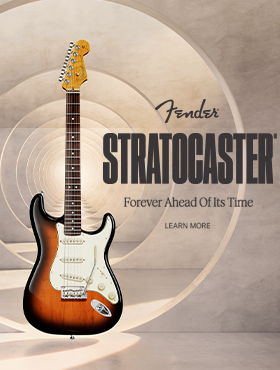LARRIVEE D-03E DREADNAUGHT ACOUSTIC/ELECTRIC
March 15, 2008 | Reviewer: Shannon Bourne
Distributor: PRO MUSIC (07) 3375 6400
 Jean Larrivee began building his own classical guitars between 1968 and 1970. Then in “71” after much poking and prodding from members of the folk fraternity, built his first steel string acoustic. He experimented for a while trying different materials and bracing techniques until settling on the bracing technique used by classical builders rather than the more traditional style employed by Martin. The term Dreadnaught was first introduced in the 1930’s by Martin for their ‘D’ series of acoustic guitars. Dreadnaught guitars are usually bigger in size and have better bass response than “parlour” style guitars. They took the term “dreadnaught” from a British battleship, the HMS Dreadnought (note the different spelling).
Jean Larrivee began building his own classical guitars between 1968 and 1970. Then in “71” after much poking and prodding from members of the folk fraternity, built his first steel string acoustic. He experimented for a while trying different materials and bracing techniques until settling on the bracing technique used by classical builders rather than the more traditional style employed by Martin. The term Dreadnaught was first introduced in the 1930’s by Martin for their ‘D’ series of acoustic guitars. Dreadnaught guitars are usually bigger in size and have better bass response than “parlour” style guitars. They took the term “dreadnaught” from a British battleship, the HMS Dreadnought (note the different spelling).
Here in my hot little hands I am holding a brand new Larrivee dreadnaught, the D-03E to be exact. The D-03E features all wood construction, Canadian Sitka spruce soundboard, African ebony fingerboard and bridge, Sapele back and sides and Canadian maple binding. All of this off set with a beautiful satin finish.
Upon picking up this instrument I was struck by the awesome, silky satin finish. The neck has that “played-in” vibe and feels very agreeable in my hand. My hand glided over the neck with ease, but also having that satin finish made me feel like I was able to control my fretting hand more effectively. This was further helped by the fact the guitar came beautifully set up with a very comprehensive owner’s manual.
So how does it sound? Choosing some stock standard open chords, I was immediately struck by the fat, rich sound projected by this guitar. The bottom end was just fat enough with barely a “woofy” tone to be had. This helped keep strummed open chords articulate and when it was time to pick out some arpeggiated chords, the note separation was perfect. This is the kind of guitar that could be put to good use in a “new-grass” band as it doesn’t get as rambunctious as a Gibson J-45. But, tone is the name of the game. The treble response of this instrument was really sweet. All of the single notes from the first fret on up had a warm round tone and my feeling would be that this warmth would only increase as the years wear on. Articulation is something that a player brings through skill but it sure helps to have an instrument that talks the way you would like it to.
Next I decided to try a few different open tunings. Tuning the guitar down to open ‘G’ (DGDGBD), I was immediately impressed by the way the strings never felt ‘rubbery’. The guitar maintained its tightness in the bottom end and its clarity in the top. Whilst it was lovely and fat, If I was going to be picky, I did find that some of the midrange frequencies that guitarists require to cut through the mix, weren’t always there. The D-03E comes equipped with an LR Baggs ‘Element’ pickup system. This system features a powerful 3 band EQ, a notch filter to help eliminate feedback, a phase inversion switch that changes the phase of the guitars top relative to the loudspeaker, and finally a mid tune knob that you can use to give the guitar the extra cut.
So how does it perform? This is really a great instrument! The plugged in tone was powerful and punchy and all of that midrange that lacks in the acoustic tone you can really tune back in when the guitar is plugged in. Tight, articulate, robust are 3 words that come to mind when I think of this instrument. I really like the overall workman like attitude of this guitar. From the satin finish to the machine heads that react really well, this is an instrument you could rely on for many years and the guitar would only get better as the years wore on.

